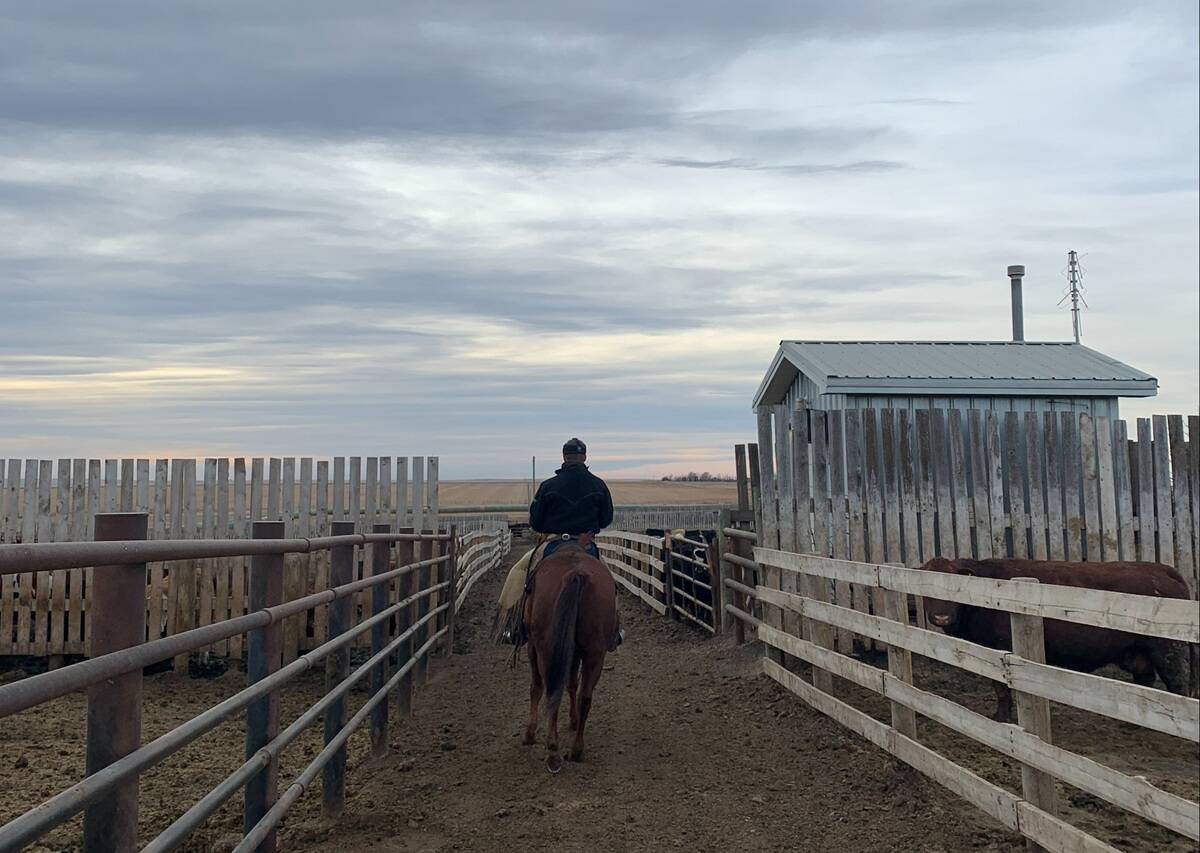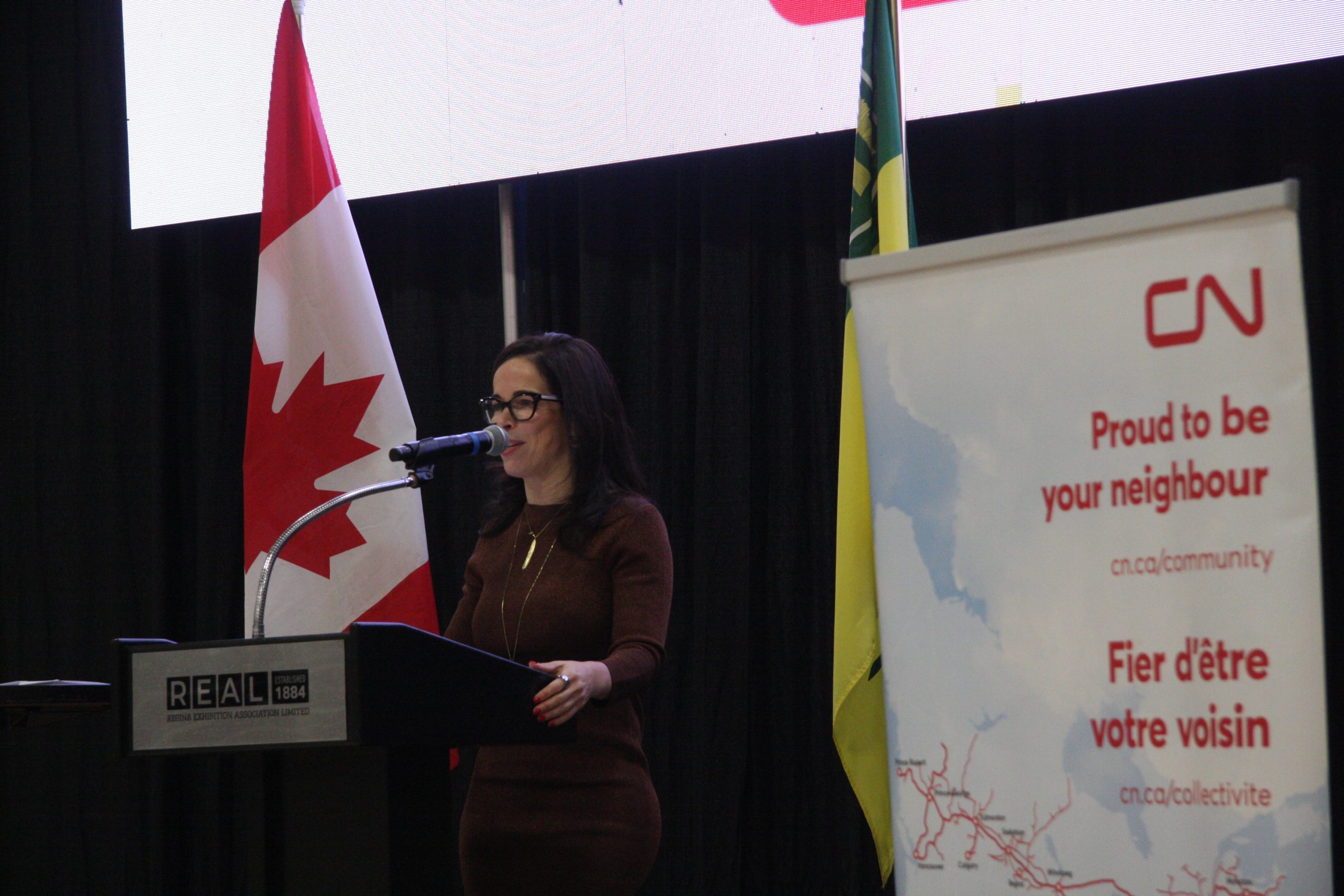REGINA — Construction of what will be the world’s largest potash mine is ahead of schedule.
Karina Gistelinck, BHP’s asset president potash, told an audience at Canadian Western Agribition that the mine at Jansen, Sask., will be shipping product by 2026.
Construction actually began more than a dozen years ago, but BHP didn’t officially approve the project until 2021.
Read Also

Pen riders still better than tech at detecting respiratory disease in feedlot cattle, says researcher
Recent research found that pen riders are better than tech at flagging signs of BRD in feedlot cattle
Since then, it’s been full steam ahead on the $18 billion mine.
Gistelinck said the first phase is 60 per -cent complete, and it’s unheard of to be ahead of schedule on a project of this size.
She said that’s because of the way it is being built.
“We’re not doing a normal, what they call an EPCM turnkey project, where you outsource everything,” she said, referring to engineering, procurement and construction management.
“We’re actually building it together with the large construction companies.”
She said the company is signing logistics contracts, and its west coast terminal is nearly ready to go.
“We have signed already what they call MOUs — I call them handshake agreements — for 12 million tonnes with customers all over the globe, reinforcing the belief that customers really want Saskatchewan potash,” Gistelinck said.
There are challenges, however, mainly in labour and infrastructure.
Community readiness is part of that.
Gistelinck said BHP wants its people to live locally and the economic growth to stay in the region.
“But the reality is that today, the Jansen region is not ready to host all of these families,” she said.
About 30,000 people live in the area now and the company will hire 900 people. That could add about 3,500 to the region.
“That’s massive for that region, and today there’s simply not the housing units available, the child-care spots available; the health-care system is already under strain,” she said.
Collaboration with communities, First Nations and others is key, she said.
A regional development community group called Sylvite Four-Six, which includes all the partners, is working to address the issues.
The company has invested in road upgrades and has developed local incentive packages for those who agree to move to the area.
“We will be there to do our part, but we need to come together to make sure that the communities are ready,” she said.
Asked why communities are not better prepared considering the long construction window, Gistelinck admitted BHP’s indecision probably made people wonder if the mine would ever go ahead.
The project also coincides with a housing shortage and higher interest rates, she said.
Gistelinck said BHP planned well ahead for the labour shortage. The company recruited in Saskatchewan but also in other provinces to make sure critical trades were available.
The province’s landlocked position is a challenge. She said there have been 62 work stoppages in the transportation sector across the country with huge impacts.
On a recent trip to Brazil, the most frequent question was whether the potash will get to its customers.
Gistelinck said the province must build on its reputation of innovation in agriculture, mining and other sectors.
She pointed to rare earth processing as the next chapter in the province’s legacy.
“What we have here is amazing and can really help us leapfrog China, leapfrog the U.S., leapfrog all destinations in terms of a powerhouse of critical minerals,” Gistelinck said.
Jansen will use cutting edge tech such as autonomous drilling, real time data analytics and predictive maintenance to improve efficiency, quality, environmental footprint and safety, she added.
This is part of the company’s strategy to be the lowest cost producer in the world and resilient to volatile potash prices.
“Potash prices do not keep me awake at night. I just need to make sure that we build this mine, that we build it safely and that we operate it in the most efficient way,” she said.















